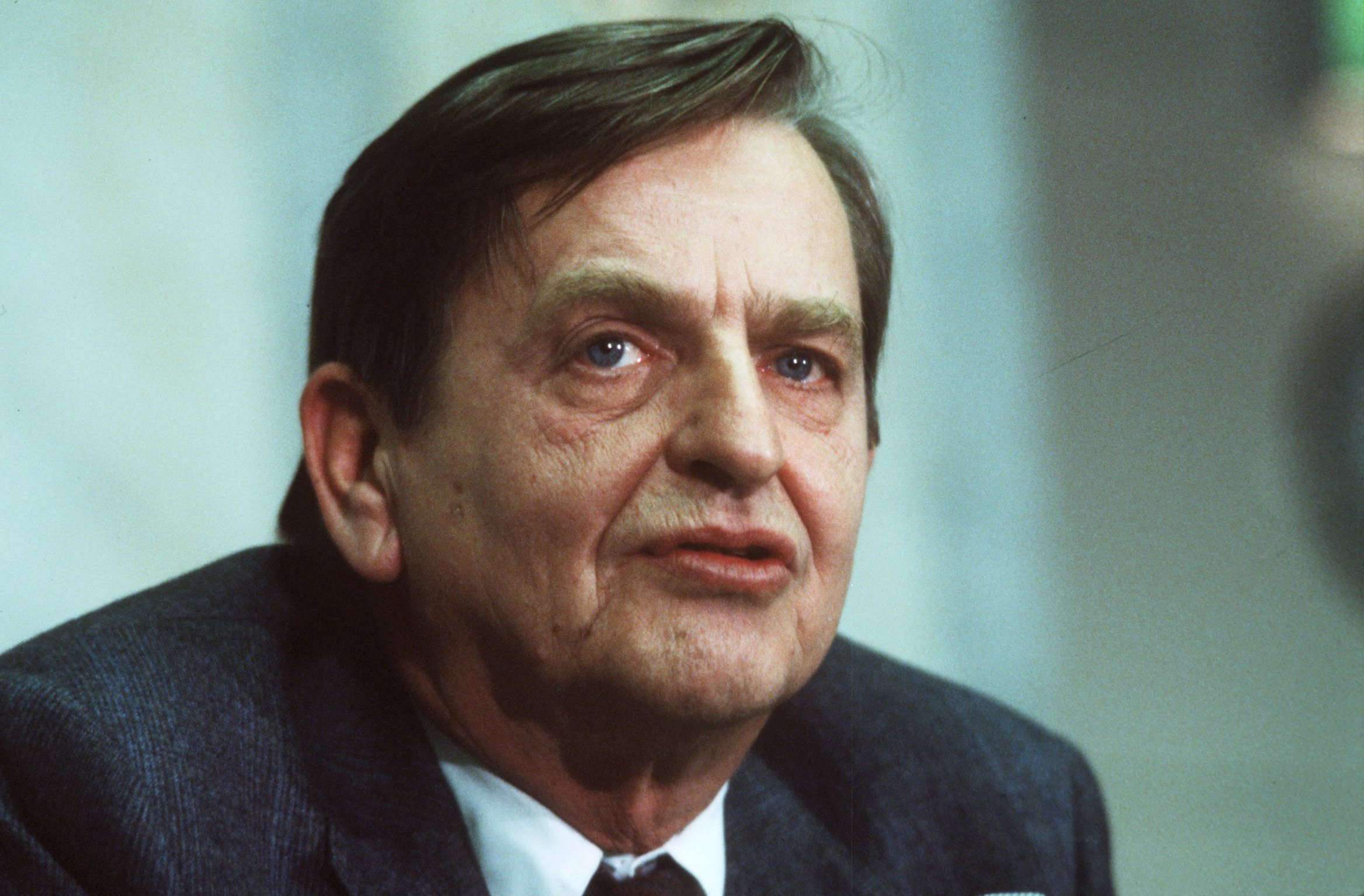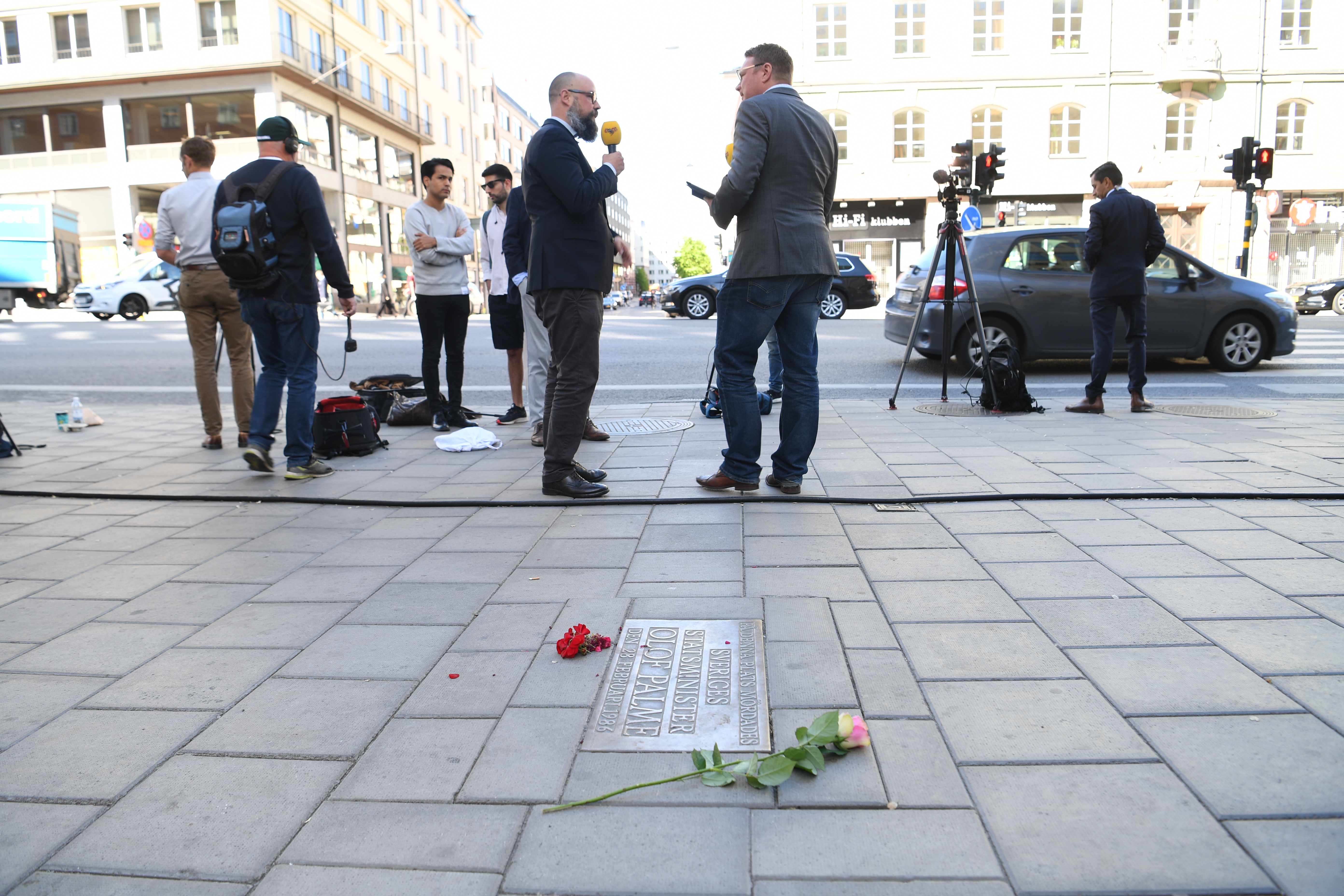
Olof Palme was shot dead outside a cinema in Stockholm in 1986. /Anders Holmstrom/TT News Agency/AFP
Olof Palme was shot dead outside a cinema in Stockholm in 1986. /Anders Holmstrom/TT News Agency/AFP
Swedish prosecutors claim to have solved the 34-year-old murder mystery of who killed Prime Minister Olof Palme, with long-term suspect Stig Engstrom named, but it is unlikely to end the conspiracy theories.
Engstrom, a graphic designer, is the man Swedish investigators believe shot Palme dead in central Stockholm in 1986, but as the suspect is dead no charge can be made.
Who was Olof Palme?
Seen as the architect of Scandinavia's welfare state model, Olof Palme was prime minister between 1969 and 1976, and 1982 and 1986, leading the Social Democrat party.
Championed by some, he also had conservative opponents who were against his politics and his criticism of the U.S.. His death in 1986 caused widespread shock in Sweden and ever since the question of who killed Palme has haunted the country.

Flowers are placed at the spot were Palme was gunned down. /Fredrik Sandberg/AFP
Flowers are placed at the spot were Palme was gunned down. /Fredrik Sandberg/AFP
How was he killed?
Palme, 59, was shot in central Stockholm after going to the cinema with his wife Lisbeth and son. He was fired at from close range in the back on a busy street and died instantly. Some witness said a man in a dark jacket fired the bullet before fleeing the scene. The murder weapon is thought to be a Smith & Wesson .357 magnum or a similar gun but it has never been recovered.
Ever since, his murder has been the cause of conspiracy theories with suggestions of foreign involvement from the CIA and the Soviet Union to Kurdish separatists and South African security services.
A suspect was taken into custody 17 days after the murder but was later released. Then a lead investigator resigned after no evidence was found following a 1987 raid on a bookshop linked to the Kurdish separatist group PKK – which had been labeled a terrorist group by Palme's government.
Christer Pettersson was convicted of his murder having been identified by Palme's wife Lisbeth in a police identity parade, but the judgment was later overturned. Since his acquittal no arrests have been made.
Swedish police visited South Africa in 1996 after a former police commander alleged the murder was directed by apartheid-era security forces to silence critics abroad.
More than 130 people have confessed to the crime in Sweden and then in a breakthrough last February, prosecutor Krister Petersson said he was close to concluding his investigation.

Swedish prosecutor Krister Petersson reveals Stig Engstrom as the murderer. /Stina Stjernkvist/AFP
Swedish prosecutor Krister Petersson reveals Stig Engstrom as the murderer. /Stina Stjernkvist/AFP
What has the prosecutor concluded?
Prosecutor Krister Petersson, who has worked on the case since 2017, says the murderer is Stig Engstrom, long known to the police and who has been dubbed "Skandia man" after the company he worked for, which had offices near the scene of the shooting.
No major investigative breakthroughs were released by the prosecution as they named Engstrom and said the technical evidence that had been used was not new.
Engstrom was known to have been present at the scene of the crime and was questioned by police on numerous occasions but was dismissed early on in the investigation.
Petersson has said several witnesses of the shooting claimed the killer looked like Engstrom, while they contradicted the graphic designer's account of his movements at the scene.
Engstrom's family has defended him, with his ex-wife telling the Expressen newspaper he was too timid to commit the crime. The newspaper also quoted childhood friend Olle Madebrink, who said Engstrom was "the most normal person in the world. I can't believe anything else."
Where does that leave the investigation?
No charges can be brought as Engstrom died in 2000, in what Swedish media has reported as a suspected suicide.
"Because the person is dead, I cannot bring charges against him and have decided to close the investigation," Petersson said.
"How he acted was how we believe the murderer would have acted," Petersson added.
The naming of Engstrom as the killer is unlikely to end the debate. The fact he didn't have a public political profile and is believed to have acted alone is set to keep the rumors and theories rolling on.